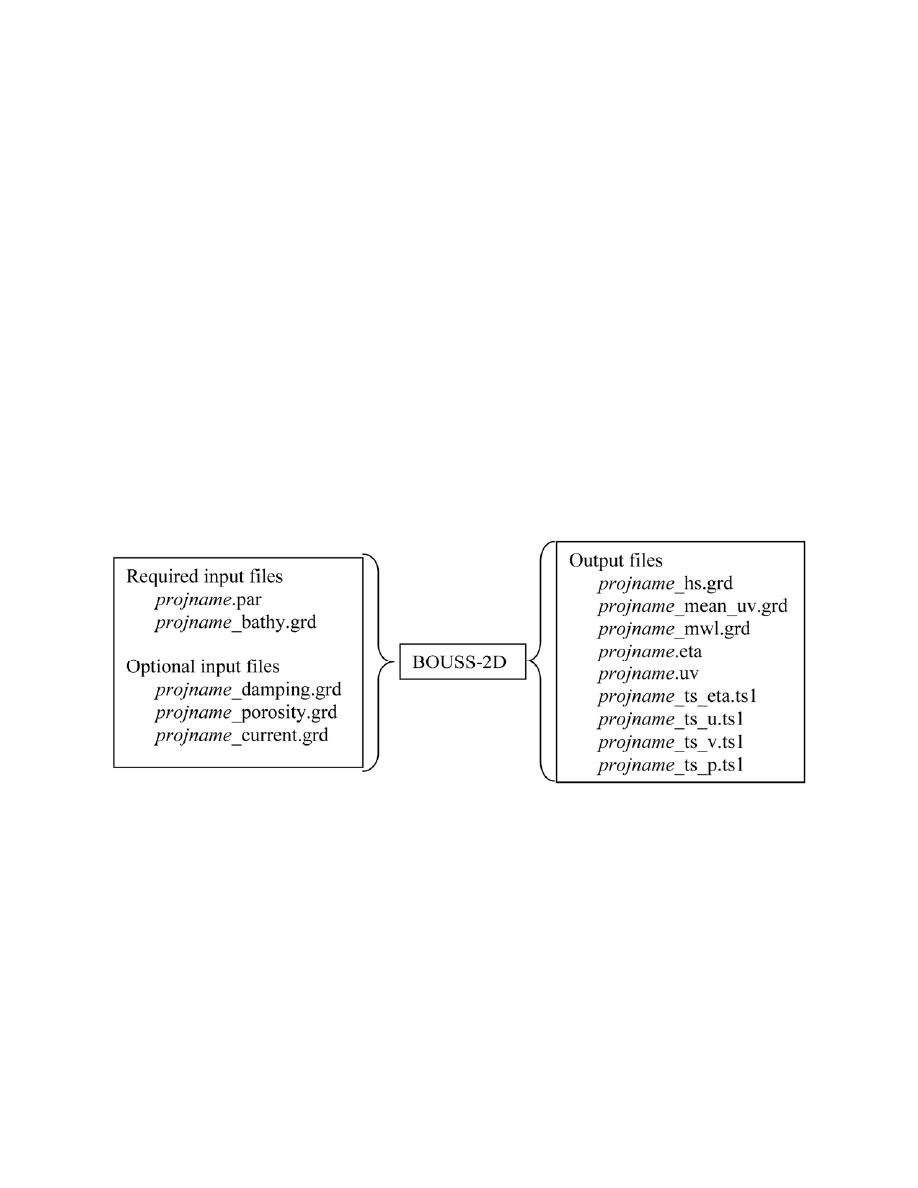
ERDC/CHL CHETN-I-69
March 2005
The SI engineering units are used in BOUSS-2D calculations. Although the model input and output
(I/O) is in metric units, data in English units may be imported into the SMS interface and converted
to metric. For example, bathymetric data in latitude/longitude can be converted in the model
interface to Universal Transverse Mercator (UTM) or State Plane coordinates. Likewise, model
results can be presented in non-SI units using conversion tools and data calculator features available
in SMS.
BOUSS-2D I/O FILES: Two files are required for a BOUSS-2D simulation (Figure 1). These are
the model parameters (*.par) and the bathymetry grid (*_bathy.grd). Other input files are optional.
The name of a parameter file can be passed to the BOUSS-2D model as a command line argument or
the program will prompt the user for this file. The model may be launched from inside of SMS in
which case the parameter file name is included in the SMS simulation.
In addition to the parameters file, the model requires spatially varied input for the grid, damping, and
porosity files. The names and locations of these files are specified in the .par file along with the
names and locations of model output files. Spatially varied model I/O is stored in ASCII grid files
for steady-state parameters and binary files for time-dependent output. Time-series output at specific
locations are stored in a time series file format. A number of I/O files are involved in a simulation.
All the potential input and output files are listed in Figure 1, and a description of each file is given in
Table 1. Sample files are listed in Appendix A.
Figure 1. Files involved in a BOUSS-2D simulation
The model includes an option to place all gridded output data (both steady state and and time
dependent) into a single binary file. The binary data file uses XMDF (http://www.wes.army.mil/ITL/
XMDF) and it is written in the standard hdf5 file format to allow for storing large files in compressed
form to improve faster processing and viewing. In addition, the binary file ensures the portability of
the compressed data across different computing platforms, i.e., a user could run BOUSS-2D model
on a high-performance computer, save results in hdf5 format, and perform post-processing on a
personal computer (PC). Alternatively, all of these tasks can be performed on a PC.
2



 Previous Page
Previous Page
